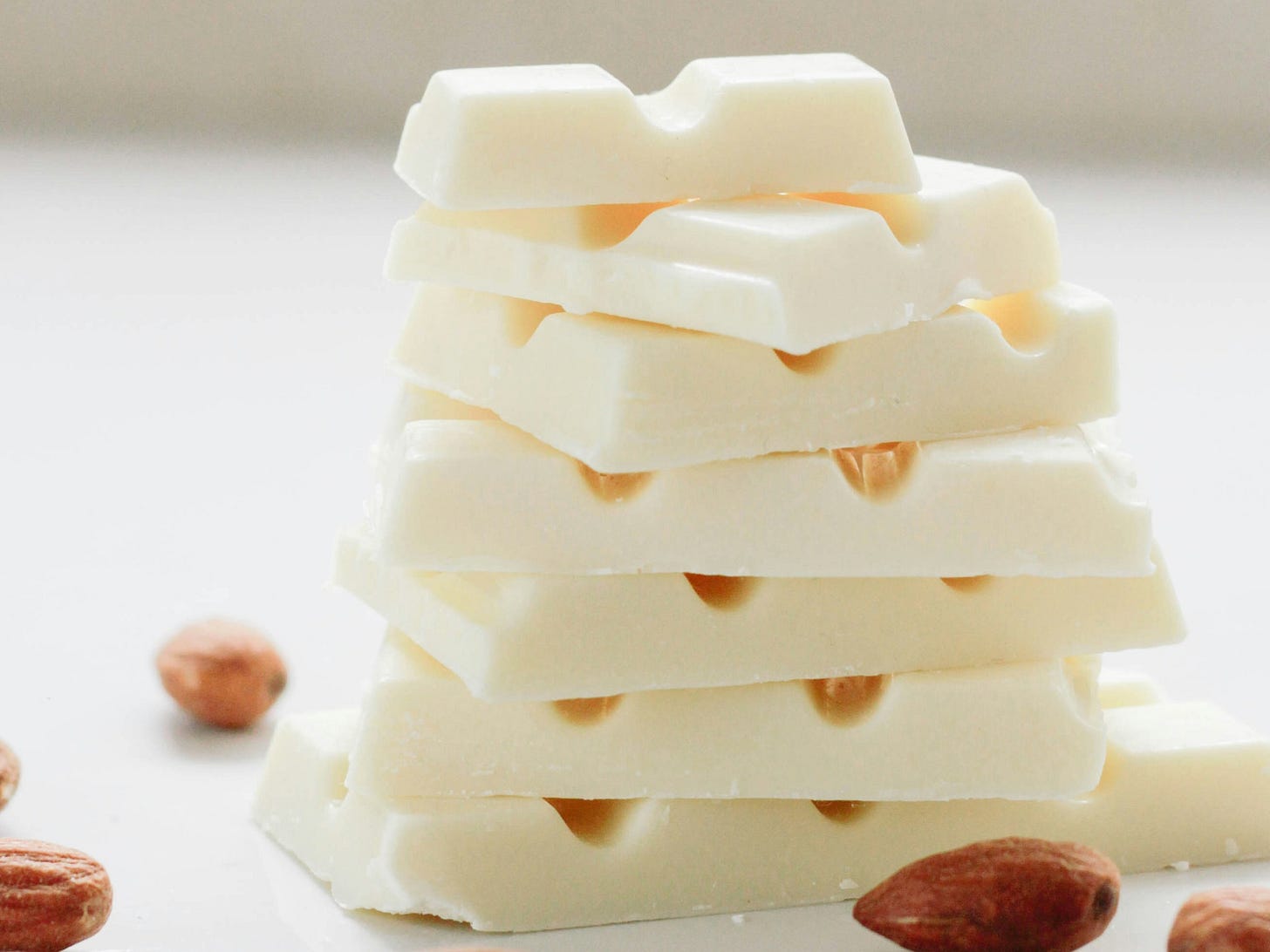
My Love for White Chocolate
Ever since I was little, I always loved white chocolate. I love it because of its sweet and vanilla flavour profile but also because it’s an amazing canvas for other flavours like matcha, mango, raspberry–you name it!
Don’t get me wrong, I love a good milk and dark chocolate but if I had to choose one to have for the rest of my life, no doubt would it be white chocolate.
As a white chocolate lover though, I’ve had a fair share of people tell me it wasn’t even considered chocolate… But I beg to differ.
But First, How is Chocolate Made?
It would be useful to understand how chocolate is made first. To make white chocolate or any chocolate really–it all starts with the cacao tree and the fruit that grows on it. These fruits are called cacao pods and inside each ripened pod are seeds which are extracted, fermented, dried, and then roasted. Once roasted, these turn into cocoa beans. The outer shell of the cocoa beans are then removed leaving the pure cocoa nibs which is the star ingredient for making chocolate.
These cocoa nibs get grounded into a paste called a cocoa liquor which is then processed even further to produce two by-products, cocoa powder and cocoa butter. Cocoa butter is the fat that contributes to the smooth and melty mouthfeel we all know and love when eating chocolate.
To make milk or dark chocolate, it’s done by blending different amounts of cocoa liquor, cocoa butter, and additional add-ins as needed (sugar, milk etc.)… But what about white chocolate?
How White Chocolate is Made
Now this is where a lot of people start to question whether white chocolate is real chocolate because it has a completely different flavour and look compared to milk and dark chocolate.
While white chocolate does come from the same cocoa beans as milk and dark chocolate–the key difference is in how it’s processed and produced. That is, it skips some of the production steps such as not having cocoa liquor which is what gives milk and dark chocolate that distinctive and delicious flavour.
Instead, white chocolate is typically a blended mixture of cocoa butter, sugar, cream, milk, and vanilla flavouring which results in that sweet and creamy flavour many people know and love about white chocolate.
And so the White Chocolate Debate Began
Now if we go back in time, white chocolate was invented in the 1930’s by Henri Nestlé and it was known as Galak in Europe or Milky Bar in the United Kingdom.
Because milk and dark chocolate already had a very established presence before the 1930’s, this new invention kind of turned into a huge debate about whether white chocolate was chocolate or not.
This debate intensified even further when white chocolate hit the United States market. That is, white chocolate was not considered chocolate for most of US history due to the guidelines and standards under the Food and Drug Administration (FDA). Under the FDA, for something to be chocolate, it had to have cocoa liquor and follow a list of other conditions. So instead of calling it chocolate, the FDA commonly referred it to it as ‘confectionary coating’.
Because the FDA declared white chocolate as not being chocolate, this whole frenzy and debate continued for a long time until…
A New Era for White Chocolate
On October 4, 2002, the FDA amended the chocolate standards and to include white chocolate as an approved term to promote honesty and fairness in the interest of consumers and match with international standards.
As of 2002, white chocolate is considered chocolate as long as it meets certain conditions like having a minimum amount of cocoa butter, milk solids, milk fat, and not passing a certain amount of sugar.
Final Thoughts 💭
I like to think of white chocolate as the ‘tomatoes’ of the chocolate world. Such that despite tomatoes tasting different from usual fruit (it’s more savoury versus being sweet), it has seeds and grows from a flower which classifies it as fruit and not a vegetable. So for white chocolate, while it may taste and look different, it does derive from cacao trees and cocoa beans just like milk and dark chocolate.
White, milk, and dark chocolate also share important chocolate characteristics/properties. For example, they all include cocoa butter and they also temper and set up the same way.
So yes, while white chocolate differs from ‘typical’ chocolate, if the FDA says white chocolate is chocolate and it has the same properties as milk and dark chocolate, I think this settles the debate—white chocolate is in fact, real chocolate.
What are your thoughts on this topic? Do you think white chocolate is chocolate? Why or why not? Let me know your thoughts below!
That’s all for this week's bake talk. Thanks for reading and I’ll see you later. 👋




